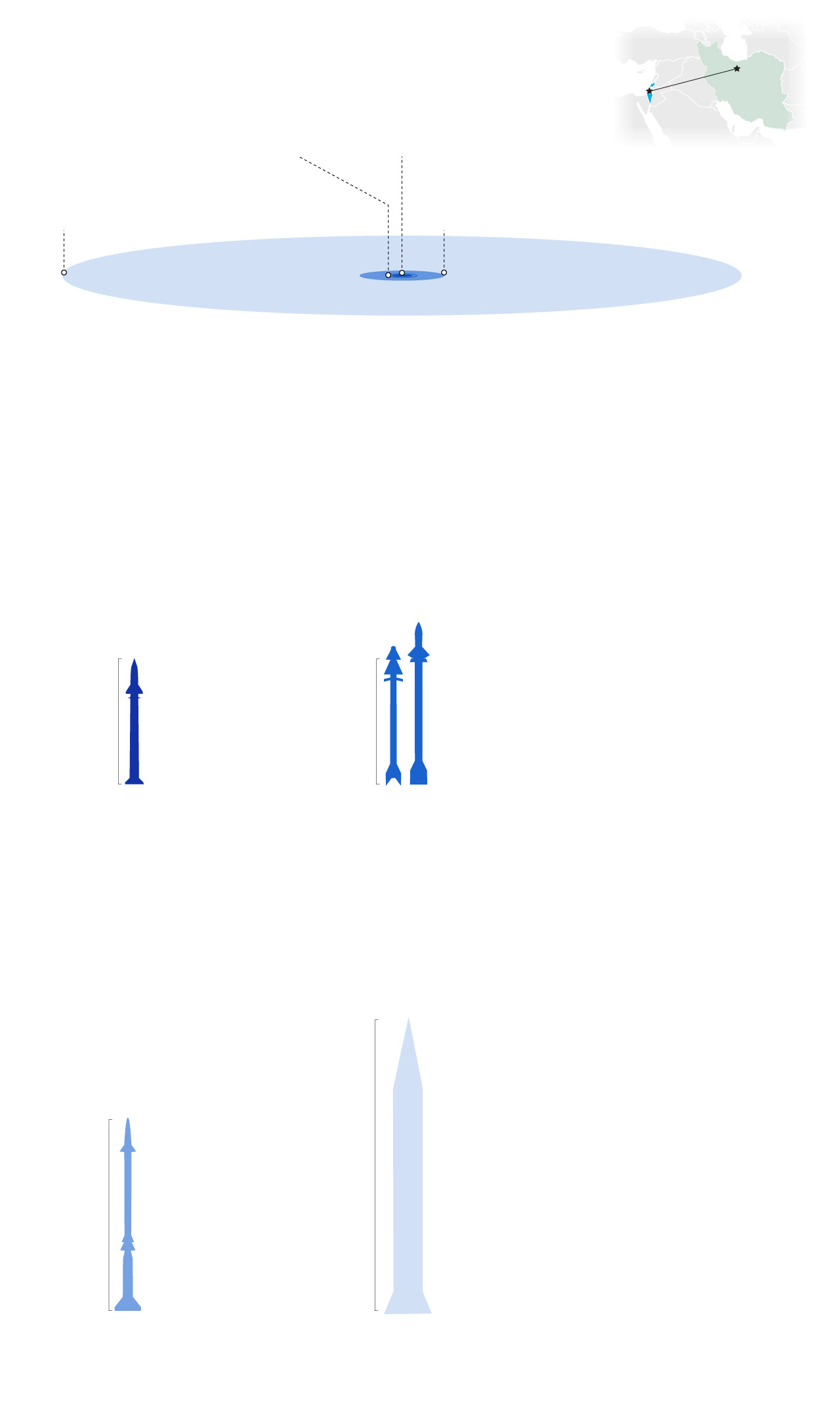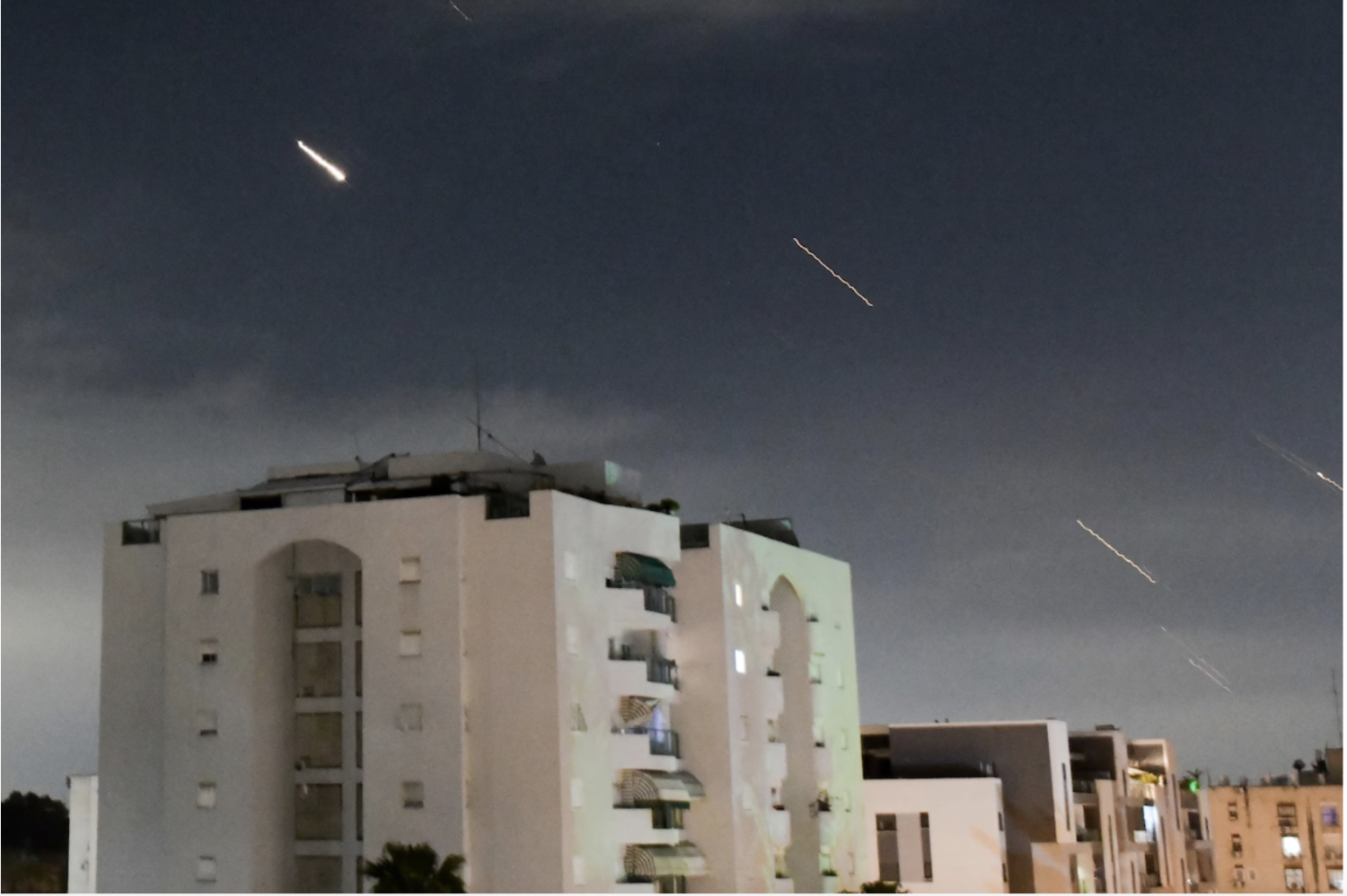One of the centerpieces of Israeli air defense is the Iron Dome, developed by the Israeli firm Rafael Advanced Defense Systems and Israel Aerospace Industries. First put into service in 2011, it is designed to stop short-range rockets and artillery like those frequently fired from Gaza by Hamas and Islamic Jihad.

How the Israeli Iron Dome air defense system works
Target
Defense
missile
Interceptor
2
A radar unit detects a missile or shell headed into Israeli airspace.
Data on the missile is sent to a battle management and control unit that assesses the threat and plots an intercept course.
A firing unit launches a missile equiped with radar and a special warhead that strikes the incoming threat.
1
3
Relying on a system of radar and analysis, the Iron Dome determines whether an incoming rocket is a threat and fires an interceptor only if there’s a danger to a populated area or important infrastructure. Israeli officials and defense companies have said that the Iron Dome has a success rate of more than 90 percent, though some defense analysts question those numbers.
David’s Sling
David’s Sling, the middle layer of Israel’s air defense network, is designed to intercept ballistic and cruise missiles as well as medium- to long-range rockets. It has been operational since 2017.
Developed by Rafael Advanced Defense Systems and Raytheon, a major U.S. defense contractor, David’s Sling is designed to counter rockets and missiles fired at a range of 25 to 186 miles.

Land defense
systems of Israel
Tehran
1,000 miles
Iron Dome
IRAN
Each Iron Dome battery can defend an area of up to 58 square miles.
Spyder
ISRAEL
Jerusalem
60 miles
Arrow System
David’s Sling
25 to 186 miles
Up to 1,490 miles
IRON DOME
SPYDER
Iron Dome is an Israeli mobile missile defense system designed to intercept short-range rockets and artillery. It is intended to counter unguided rocket and drone attacks.
Defense system intended to prevent attacks from aircraft, helicopters, bombers, cruise missiles, UAVs and stand-off weapons.
Firing Unit
Firing Unit
20 container launchers each
with one Tamir missile.
Two types of missiles, the Python-5 for short-range engagements and the Derby for medium-range.
11.8 ft.
Missile range
Missile range
3 to 43 miles
Up to 62 miles
9.8 ft.
10.2 ft.
Altitude
Up to 6 miles
DAVID’S SLING
ARROW 2 AND 3
It is designed to intercept ballistic and cruise missiles. Capable of intercepting targets at altitudes of up to 15 km.
Upper layer of Israel’s missile defense system. The Arrow 3 is the longest-range interceptor currently fielded with the Arrow Weapon System, complementing the Arrow 2, which engages targets in the upper atmosphere.
Firing Unit
Firing Unit
6 to 12 Stunner interceptor
missiles.
Up to 6 missiles
22.9 ft
Missile range
Missile range
25 to 186 miles
Up to 1,491 km
15 ft.
Altitude
Altitude
Up to 9 miles
62 km
Note: Not all of Israel’s defense systems are included.
Sources: CSIS, Rafael, Army Recognition
Arrow
The Arrow 2 and 3 systems are designed to intercept missiles flying outside Earth’s atmosphere and form the top level of Israel’s air defense network.
Completed in 2017, the Arrow 3 was first tested in combat last year, intercepting a missile fired by the Iranian-supported Houthis in Yemen toward the Israeli city of Eilat. Jointly funded and developed with the United States, it does not use explosives like the Arrow 2, instead relying solely on the damage that is caused by the interception itself.
As attacks were launched from Iran, Iraq, Syria and Yemen, a U.S.-led coalition including Britain and France provided crucial support.
Among the U.S. forces that participated were the 494th Fighter Squadron, headquartered in Britain, and the 335th Fighter Squadron of Seymour Johnson Air Force Base in North Carolina. The two squadrons flew F-15E Strike Eagles and took down about 70 attack drones headed toward Israel, The Washington Post reported.
The USS Carney and USS Arleigh Burke, destroyers stationed in the eastern Mediterranean Sea, shot down between four and six ballistic missiles while U.S. troops manning the Patriot missile defense system in Irbil, Iraq, took down a missile that had violated Iraqi airspace on its vector to Israel, according to a senior military official speaking to reporters on the condition of anonymity under ground rules set by the White House.
British Royal Air Force planes shot down “a number of Iranian attack drones,” Prime Minister Rishi Sunak said.
Jordan, which has criticized Israel’s war in Gaza, shot down munitions that were in its airspace to prevent them “from endangering the safety of our citizens and residential and populated areas,” its government said.
Dan Lamothe, Alex Horton, Adam Taylor and Brittany Shammas contributed to this report.





